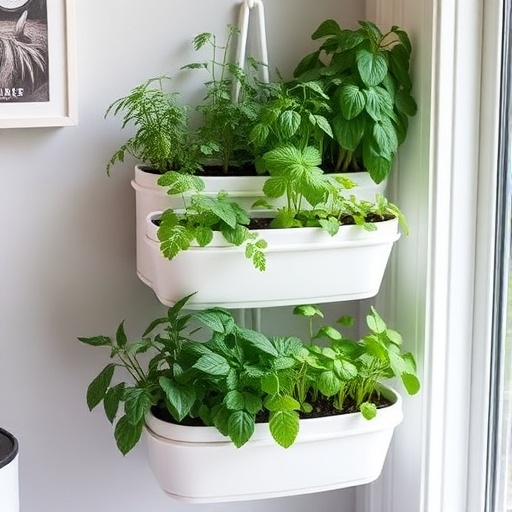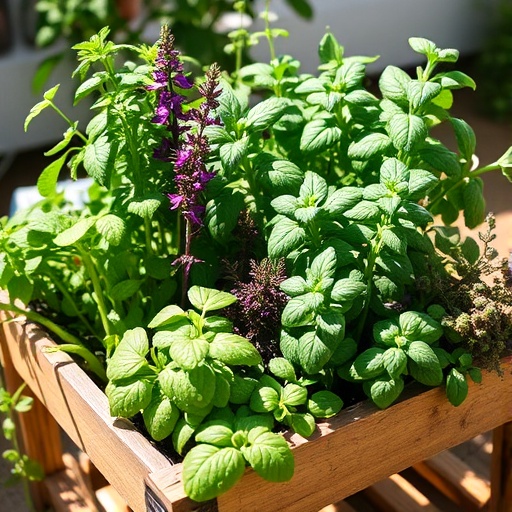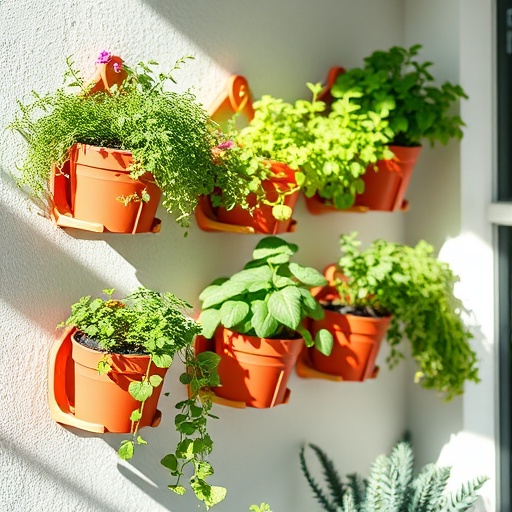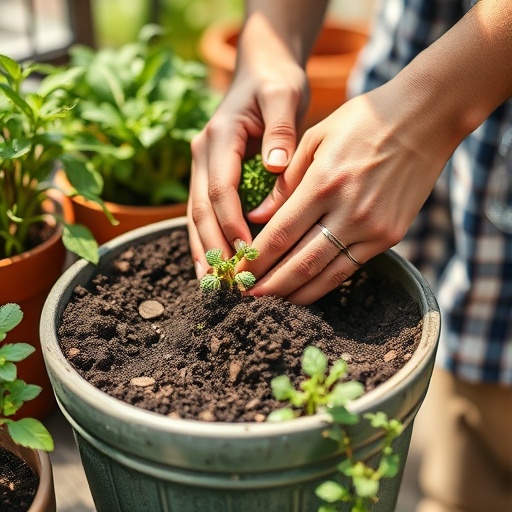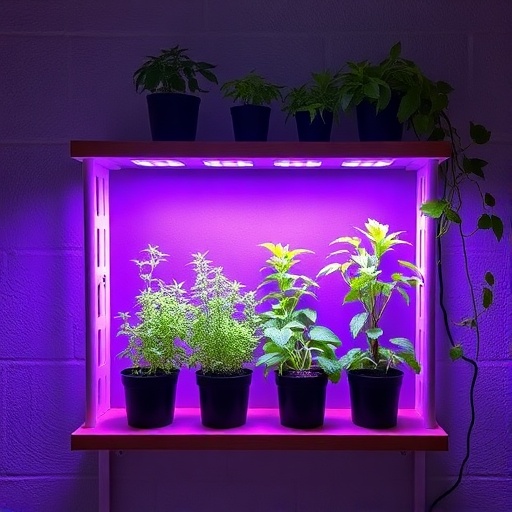Introduction
Did you know that over 70% of urban dwellers dream of growing their own food but feel limited by space? It’s a common misconception that vibrant, productive gardens are only for sprawling backyards. The truth is, with a little creativity and the right plant choices, anyone can cultivate an abundant green oasis, even when exploring small garden ideas on a budget. Whether you live in a cozy apartment, a city condo, or just have a tiny patio, transforming those limited areas into thriving havens of culinary herbs is not only possible but incredibly rewarding. Imagine stepping just outside your kitchen door to snip fresh basil for your pasta or rosemary for your roasted potatoes—all from plants grown in containers, window boxes, or even vertical planters. This guide will show you how to maximize every square inch, making your gardening dreams a tangible reality without breaking the bank.
Tools & Materials Needed
Embarking on your small-space herb garden adventure doesn't require a massive investment. The beauty of these small garden ideas on a budget is how little you truly need to get started. Here's a detailed list:
- Pots and Containers: This is where creativity shines!
- Budget-Friendly: Repurpose old plastic food containers (yogurt tubs, milk jugs), tin cans (ensure no sharp edges), or even sturdy fabric grocery bags. Drill small drainage holes if they don't have them. Look for terracotta pots at thrift stores or yard sales; they offer good drainage and aesthetic appeal.
- Eco-Friendly: Biodegradable starter pots made from peat, coir, or recycled paper are excellent for seedlings. Consider upcycled wooden crates or palates for vertical garden structures.
- Specifics: Aim for pots at least 6-8 inches in diameter for individual herb plants, larger for multiple plants like basil or mint which spread.
- Quality Potting Mix: This is non-negotiable. Look for potting soil designed for containers; it's lighter and drains better than garden soil. A good organic potting mix usually costs around $10-15 for a large bag. For a budget alternative, you can mix your own: 1 part compost, 1 part perlite/vermiculite, 1 part coco coir (avoid peat for sustainability).
- Herb Seeds or Starter Plants:
- Seeds: Most economical, especially if you plan to grow many plants. Popular choices like basil, cilantro, parsley, dill, and chives are all excellent herbs that thrive from seed. Expect to pay $2-5 per packet.
- Starter Plants: Faster results and great for beginners. Look for healthy, compact plants at your local nursery or farmer's market. These cost more, typically $3-7 per plant, but skip the germination phase.
- Small Gardening Trowel: Essential for digging and planting. A durable hand trowel is usually under $10.
- Watering Can with a Fine Rose: Gentle watering prevents dislodging seeds or delicate seedlings. A small one is perfect for indoor or balcony setups. Or, make your own by poking small holes in the lid of a plastic bottle.
- Pruning Shears/Scissors: For harvesting leaves and encouraging bushier growth. Kitchen scissors work perfectly for small herb gardens.
- Gardening Gloves: To protect your hands from soil and thorns, though many herb growers prefer the tactile connection.
- Plant Labels: Important for remembering what you planted where, especially when starting from seed. Popsicle sticks or cut-up plastic containers make great free labels.
Time & Effort Overview
Starting a small herb garden is surprisingly efficient in terms of time and effort, making it ideal for busy individuals or first-time gardeners.
- Initial Setup (Planting): If you're using starter plants, you can have your garden assembled and planted in as little as 1-2 hours. Sowing seeds adds a bit more time but is still manageable, perhaps 2-3 hours to fill pots and carefully sow various types. This is notably quicker than establishing a traditional in-ground garden, which can take days of soil preparation.
- Germination (for seeds): Most herb seeds sprout within 7-14 days. Some, like rosemary, can take up to 3 weeks.
- Growth to Harvest: Expect your herbs to be ready for their first harvest within 3-6 weeks from planting starter plants. Seeds will prolong this, generally another 2-4 weeks after germination. For instance, basil typically offers its first generous harvest in about 4-6 weeks from a seedling, growing roughly 30% faster than larger vegetables like tomatoes, which can take 60-90 days.
- Daily/Weekly Maintenance: This is where the real beauty of small-space herb gardening shines.
- Daily: A quick check on soil moisture and plant health takes 5-10 minutes.
- Weekly: More thorough watering, light pruning, and pest inspection might take 15-30 minutes.
- Difficulty Level: Beginner-Friendly. Most common herbs are incredibly forgiving. The primary challenges for beginners usually involve overwatering or insufficient light, both easily remedied. Compared to growing finicky orchids or grafting fruit trees, herb gardening is a walk in the park!
Step-by-Step Gardening Process

Ready to get your hands dirty? Building your very own herb garden, especially with small garden ideas on a budget, is a straightforward and rewarding process.
Step 1: Choose Your Herbs Wisely
Start by selecting herbs that suit your climate and cooking habits. For small spaces, compact varieties or those that tolerate pruning well are key. Consider popular choices like:
- Basil: Loves sun, very productive.
- Mint: Spreads aggressively, so keep it in its own pot!
- Rosemary: Prefers drier conditions, can be trained into small bushes.
- Thyme: Drought-tolerant,
a great ground cover. - Chives: Onion-flavored, easy to grow.
- Parsley: Biennial, needs consistent moisture.
- Oregano: Hardy and spreads.
Expert Tip: Think about what you cook most often. If you make a lot of Italian food, basil, oregano, and parsley are must-haves. For fresh salads, consider dill and chives.
Step 2: Prepare Your Containers
Ensure all chosen containers have adequate drainage holes. If not, use a drill or hammer and nail to create several ¼-inch holes at the bottom. This prevents waterlogging, which is a leading cause of herb plant demise.
- Practical Insight: Many gardeners incorrectly add a layer of gravel at the bottom for drainage. Data shows this actually reduces effective drainage by creating a perched water table. Just good drainage holes and quality potting mix are enough!
Step 3: Fill with Quality Potting Mix
Fill your containers with your chosen potting mix, leaving about an inch of space from the rim. Gently pat down the soil, but don't compact it too tightly; roots need air!
- Personal Touch: I once used regular garden soil for potted basil and saw it struggle for weeks. Switching to a proper potting mix made all the difference—the plants perked up almost overnight. Don’t cut corners here!
Step 4: Planting Seeds or Starter Plants
- For Seeds: Follow package instructions carefully regarding planting depth and spacing. Most herb seeds are tiny and only need to be covered lightly with a thin layer of soil (about ⅛ to ¼ inch). Water gently immediately after sowing.
- For Starter Plants: Carefully remove the plant from its nursery pot. Loosen any coiled roots at the bottom. Dig a hole in your container large enough for the root ball, place the plant, and backfill with soil, gently firming around the base. Water thoroughly.
- Don’t worry if: a few leaves drop after transplanting. It’s common for plants to experience a bit of shock; they’ll recover quickly with proper care.
Step 5: Initial Watering
After planting, water generously until you see water draining from the bottom holes. This ensures the soil settles around the roots or seeds and eliminates air pockets. For seeds, use a fine mist or a watering can with a rose to avoid washing them away.
Step 6: Provide Adequate Light
Most herbs require at least 6 hours of direct sunlight daily. Place your containers in your sunniest spot—a south-facing window, a bright balcony, or a patio. If natural light is scarce, consider adding an inexpensive LED grow light.
- Here’s how to fix: Leggy, pale plants are often a sign of insufficient light. Move them closer to the window or supplement with artificial light.
Step 7: Label Your Plants
Once everything is planted, label each container clearly with the herb's name and the planting date. This is especially helpful if you’re growing multiple varieties or starting from seed.
Growth & Care Tips
Maximizing your harvest from your small garden ideas on a budget requires consistent, thoughtful care. Here’s how to keep your herbs flourishing:
- Watering Frequency: This is perhaps the most critical aspect. Herbs generally prefer consistently moist, but not soggy, soil.
- Rule of Thumb: Stick your finger about an inch into the soil. If it feels dry, it's time to water. This might mean daily watering in hot, sunny conditions or every few days otherwise. Overwatering causes root rot in over 60% of potted plants, a devastating but preventable condition. Ensure good drainage!
- Scientific Fact: Plants absorb nutrients dissolved in water, but their roots also need oxygen. Waterlogged soil deprives roots of oxygen, leading to suffocation.
- Sunlight Exposure: As mentioned, most herbs are sun-worshippers, needing 6+ hours of direct sunlight. Place them on south-facing windowsills, balconies, or patios. Rotate pots occasionally to ensure all sides get sunlight for even growth.
- Pruning for Bushiness: Regular harvesting and pruning are vital. Don't be afraid to snip!
- Method: Once a plant has grown several sets of leaves, pinch off the top set of leaves just above a leaf node (where new leaves emerge). This encourages the plant to branch out, leading to a bushier, more productive plant. For example, pinching basil plants regularly can increase yield by up to 50%.
- Fertilization: Potted plants deplete nutrients faster than in-ground plants.
- Frequency: Fertilize every 4-6 weeks during the growing season (spring through early autumn) with a balanced liquid organic fertilizer at half strength.
- Data Insight: Over-fertilization can burn roots and reduce flavor. Less is often more with herbs.
- Pest Prevention: Small herb gardens are less susceptible to large infestations but still require vigilance.
- Common Pests: Aphids, spider mites, and whiteflies.
- Prevention: Regularly inspect the undersides of leaves. A strong spray of water can dislodge many pests. For persistent issues, use an insecticidal soap or neem oil spray, following product instructions carefully. Early detection is key; an infestation caught early is 90% easier to manage.
Eco-Friendly & Sustainable Alternatives
Embracing sustainability in your small herb garden not only helps the planet but also makes your small garden ideas on a budget even more effective.
- Composting: Turn kitchen scraps (vegetable peels, coffee grounds, eggshells) into nutrient-rich compost. A small countertop compost bin is perfect for apartment living. This reduces waste and provides free, high-quality soil amendment.
- Natural Fertilizers: Beyond homemade compost, consider worm castings (a fantastic organic fertilizer), diluted "compost tea" (water steeped with compost), or even used coffee grounds mixed into the topsoil (for acid-loving plants).
- Water Conservation:
- Rainwater Harvesting: If you have a balcony or patio, even a small barrel or bucket can collect rainwater for irrigation. Rainwater is naturally soft and chlorine-free, which your plants will love.
- Grouping Plants: Grouping pots together reduces evaporation.
- Mulching: A thin layer of mulch (shredded leaves, straw, or wood chips) on top of the soil helps retain moisture.
- Alternatives for Small Spaces:
- Balcony Gardens: Maximize space with hanging baskets, railing planters, and tiered plant stands.
- Pots: The quintessential solution! Vary pot sizes and heights for visual interest.
- Vertical Gardens: Transform a blank wall into a verdant display. Pallets, repurposed shoe organizers, or custom-built structures with pockets can hold multiple herbs. This strategy significantly increases planting area without taking up precious floor space. You can get more vertical garden ideas here: https://pincraftpro.com/vertical-balcony-herb-garden-design-ideas/
- Window Boxes: Great for herbs that don't need deep roots, like chives, thyme, and mint.
Creative Ideas & Uses
Beyond just growing, integrate your herbs into your home's aesthetic and culinary life with these inspiring small garden ideas on a budget:
- Decorate with Plants:
- Herb Centerpieces: A small pot of thriving rosemary or a vibrant cluster of basil can make a beautiful, fragrant centerpiece for your dining table.
- Kitchen Window Display: Hang mini pots with S-hooks from a tension rod across your kitchen window for an edible curtain.
- Mix and Match: Combine herbs with small flowering annuals (like nasturtiums or pansies, which are also edible!) for visual appeal and to attract beneficial insects.
- Repurpose Garden Materials:
- Decorative Labels: Instead of plain plastic, use painted rocks, sea glass, or ceramic shards imprinted with herb names.
- DIY Planters: Old colanders can become hanging planters, wine crates can be transformed into rustic herb boxes, and empty coffee tins can be painted and used for single herb plants. Let your imagination run wild! Check out this guide for more DIY container ideas: https://pincraftpro.com/diy-balcony-herb-garden-with-recycled-containers/
- Combine Plants Aesthetically:
- Companion Planting: Group herbs that have similar light and water needs while also benefiting each other. For example, basil and tomatoes are famous companions. Marigolds planted with herbs can deter pests.
- Height and Texture: Create visual interest by combining tall, upright herbs (rosemary) with sprawling ones (thyme) and bushy options (basil).
- Culinary Explorations:
- Herb-infused Oils & Vinegars: Preserve your excess harvest by infusing olive oil with rosemary or basil, or white vinegar with tarragon.
- Herbal Teas: Chamomile, mint, and lemon balm make delightful, calming teas directly from your garden.
- Gourmet Garnishes: Elevate everyday dishes with a sprinkle of fresh chives or a sprig of parsley.
Common Mistakes to Avoid
Even seasoned gardeners make mistakes, but being aware of common pitfalls can save you time, effort, and heartache, especially when focusing on small garden ideas on a budget.
- Overwatering: As mentioned, this is the #1 killer of potted plants. Symptoms include yellowing leaves, leaf drop, and stunted growth.
- Expert Reasoning: Overwatering suffocates roots by filling all the air pockets in the soil, preventing oxygen exchange. Always check soil moisture with your finger before watering.
- Insufficient Light: Herbs are sun lovers. If they don't get enough light, they become "leggy" (stretched out with sparse leaves) and produce less flavor.
- Data Point: Studies show that herbs receiving less than 4 hours of direct sunlight produce up to 70% less essential oil content, directly impacting flavor.
- Lack of Drainage: Containers without drainage holes are death traps for herbs. Standing water leads directly to root rot.
- Quick Fix: Immediately create drainage holes if absent, or transplant to a pot that has them.
- Ignoring Pruning: While it feels counterintuitive to cut off healthy growth, neglecting to prune leads to spindly, less productive plants.
- Expert Reasoning: Pruning encourages branching and concentrated energy into new growth, resulting in a bushier, more flavorful plant.
- Using Garden Soil in Pots: Garden soil is dense and can compact in containers, inhibiting drainage and root growth.
- Correction: Always use a high-quality, well-draining potting mix specifically designed for containers.
- Planting Aggressive Spreaders Together: Mint and oregano, while delicious, can quickly choke out their neighbors if planted in the same container.
- Pro Tip: Always give mint its own dedicated pot to prevent it from dominating your small garden.
Maintenance & Storage Tips
Long-term success with your small herb garden involves ongoing maintenance and smart storage, especially if you're working with small garden ideas on a budget and want to enjoy your harvest year-round.
- Seasonal Care:
- Spring: Time for planting new seeds or seedlings. Gradually acclimate indoor-grown herbs to outdoor conditions (hardening off) by placing them outside for increasing periods over a week.
- Summer: Peak growth! Requires consistent watering and regular harvesting/pruning. Watch out for pests in the warmer months.
- Autumn: Many annual herbs will start to decline or go to seed. Harvest heavily or consider bringing tender perennials (like basil) indoors if you have a sunny spot. Some hardy herbs like thyme and rosemary can overwinter in outdoor pots in milder climates.
- Winter: For outdoor perennial herbs, ensure pots are insulated (wrap with burlap or move to a sheltered spot) to protect roots from freezing. Reduce watering frequency significantly. Indoor herbs will need less water and possibly supplementary light.
- Addressing Common Issues:
- Yellow Leaves: Often a sign of overwatering, nutrient deficiency, or sometimes natural aging of lower leaves. Assess your watering schedule and consider a light feeding.
- Poor Soil Drainage: If water sits on top of the soil for too long, it indicates poor drainage. Repotting with fresh, well-draining soil and ensuring adequate drainage holes is crucial.
- Wilting Plants: Can be caused by both underwatering (soil is dry) and overwatering (root rot prevents water uptake). Check soil moisture first.
- Harvesting for Maximum Yield:
- Early Morning: The best time to harvest herbs is in the early morning after the dew has dried but before the sun gets too hot. This is when essential oils are most concentrated, leading to the best flavor.
- Rule of Thirds: Never harvest more than one-third of the plant at any one time to ensure it can recover and continue growing.
- Seed Saving: If you let some herbs go to flower (like dill, cilantro, or basil), you can collect their seeds for next year's planting, saving money on new seed packets. Allow the flower heads to dry completely on the plant, then gently shake the seeds into a bag.
- Storing Harvested Herbs:
- Fresh: Wrap in a damp paper towel and store in the refrigerator for up to a week. Basil prefers to be kept at room temperature with stems in water, like a bouquet.
- Drying: Tie bundles of herbs and hang them upside down in a warm, dark, well-ventilated area until brittle. Store dried herbs in airtight containers away from direct sunlight.
- Freezing: Chop fresh herbs finely, place them into ice cube trays, cover with water or olive oil, and freeze. Pop out cubes as needed for cooking.
Conclusion
Embracing small garden ideas on a budget empowers you to create a thriving herb garden, no matter your space constraints. We've journeyed through selecting the right tools, understanding time commitments, and mastering essential planting and care techniques. From the initial thrill of seeing seeds sprout to the ongoing joy of harvesting fresh, fragrant herbs, the benefits extend far beyond your kitchen. You're not just growing food; you're nurturing a connection with nature, enhancing your well-being, and adding a touch of sustainable beauty to your home.
Don't let limited space or a tight budget deter your gardening dreams. Start small, be patient, and watch your tiny plot flourish into a source of endless delight. Are you ready to snip your first homegrown herbs? Share your starting photos with us on social media! And if you’re looking for even more inspiration, why not explore our related guides on expanding your green thumb?
FAQ
Q1: What are the easiest herbs to grow from seed in small spaces?
A1: Basil, cilantro, dill, chives, and parsley are remarkably easy to grow from seed, ideal for small garden ideas on a budget. They germinate quickly and thrive in containers as long as they get enough sunlight.
Q2: How much sunlight do herbs really need to flourish?
A2: Most culinary herbs are sun-loving and require at least 6 hours of direct sunlight daily. If you notice your herbs becoming leggy or pale, it's a clear sign they need more light. For indoor setups, supplementing with an affordable LED grow light can make a huge difference.
Q3: Can I grow different herbs in the same pot?
A3: Yes, but with caution. Group herbs with similar water and light requirements. For instance, rosemary, thyme, and oregano (all prefer drier conditions) can co-exist happily. However, aggressive spreaders like mint should always have their own pot to prevent them from taking over the container.
Q4: How often should I water my potted herbs?
A4: The best practice is to check the soil moisture daily. Stick your finger an inch into the soil; if it feels dry, it's time to water. This might be daily during hot weather or every few days in cooler conditions. Overwatering is a common mistake and can lead to root rot.
Q5: My herbs are getting tall and sparse. What should I do?
A5: This is a sign they need pruning! Pinch back the top sets of leaves just above a leaf node. This encourages bushier growth and a more productive plant, ensuring your small garden ideas on a budget result in abundant harvests.
Q6: What if I don't have a lot of vertical space?
A6: Don't worry! Utilize various techniques perfect for small gardens. Consider hanging baskets, railing planters, tiered plant stands, or even stackable containers. Maximizing vertical space with these solutions is a cornerstone of efficient small-space gardening. You can also get more ideas for space-saving solutions in a greenhouse context here: https://pincraftpro.com/space-saving-greenhouse-shelving-ideas/
Q7: Is it possible to grow herbs indoors year-round?
A7: Absolutely! While most herbs thrive outdoors, many can be successfully grown indoors year-round. Provide them with ample sunlight (south-facing window is best) or supplemental grow lights, consistent temperatures, and monitor watering carefully. Some herbs like chives and mint are particularly resilient indoors. For more detailed tips on general indoor plant care, check out this post: https://pincraftpro.com/easy-indoor-gardening-setup-for-beginners/
Here are some more insightful articles to help you cultivate your green thumb:
- Considering a DIY mini greenhouse for an even more controlled environment? Explore some fantastic ideas here: https://pincraftpro.com/diy-mini-greenhouse-ideas-for-home-gardeners/
- If you're eager to start seeds earlier or extend your growing season, our beginner's guide to greenhouse gardening offers valuable advice: https://pincraftpro.com/beginners-guide-to-greenhouse-gardening/
- For those whose balconies are bathed in sun and looking for more herb inspiration, check out the best herbs to grow in sunny spots: https://pincraftpro.com/best-herbs-to-grow-on-a-sunny-balcony/
